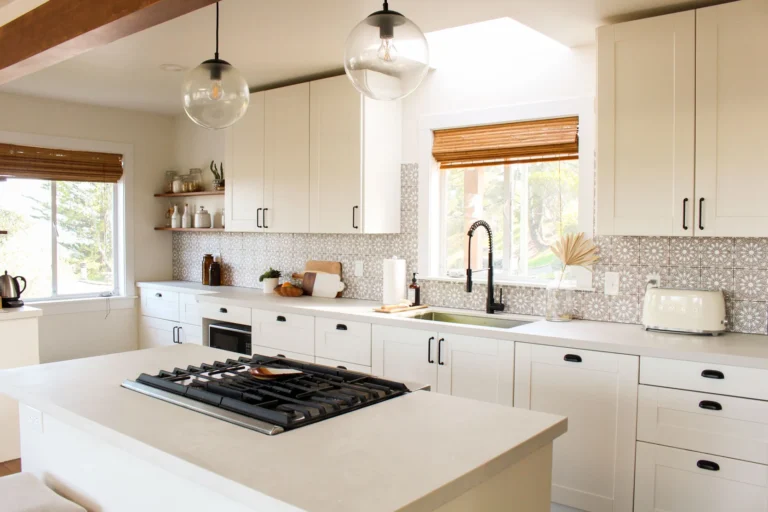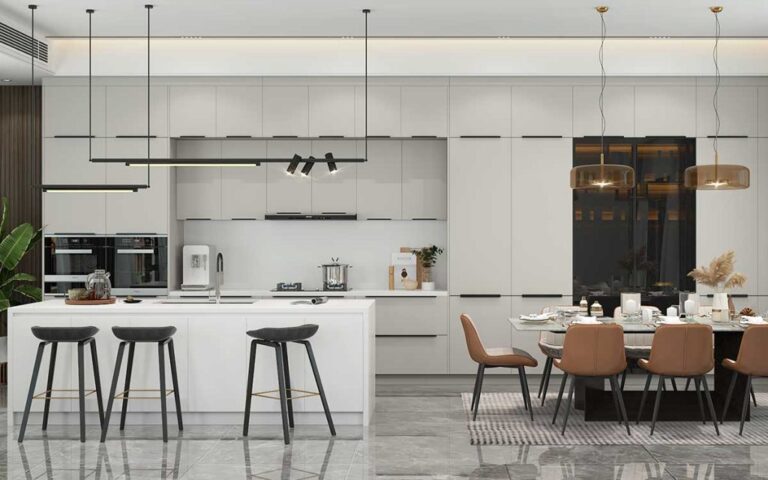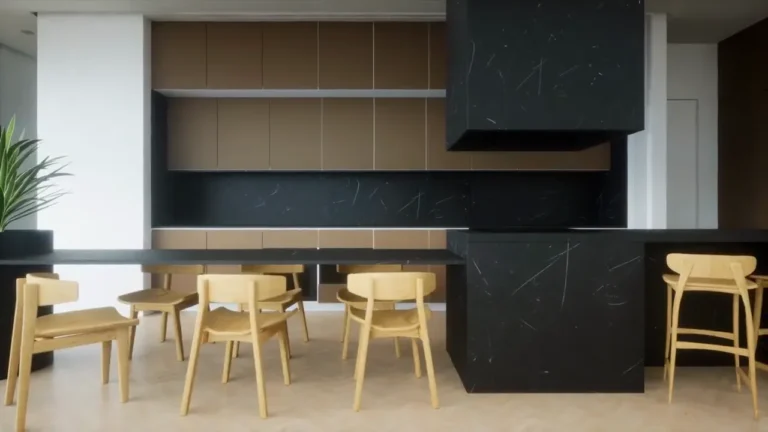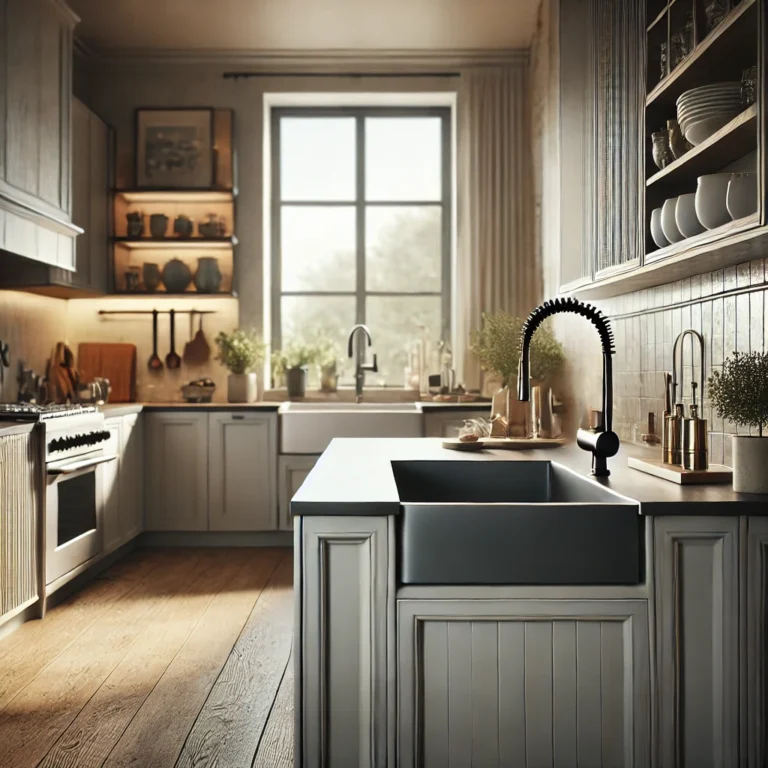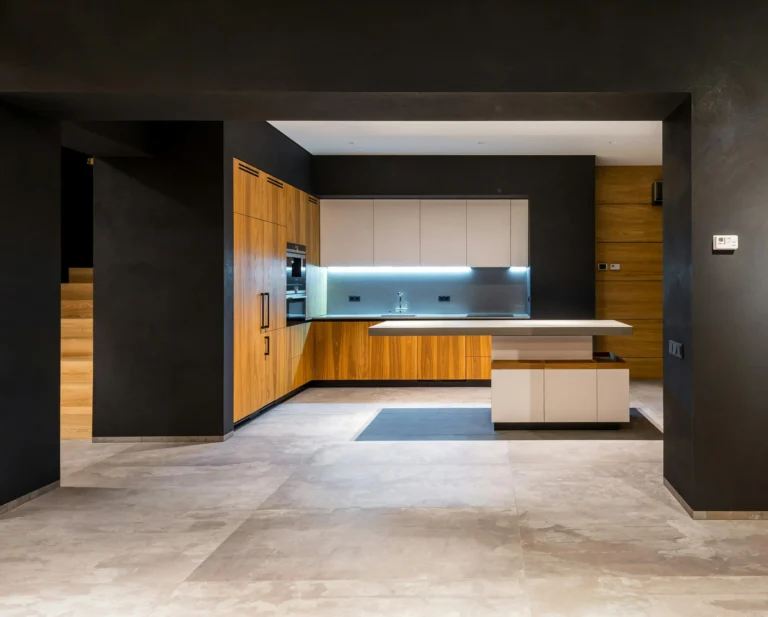Kitchen Remodel Cost | 10×10, 12×12, and 10×20 Pricing Guide
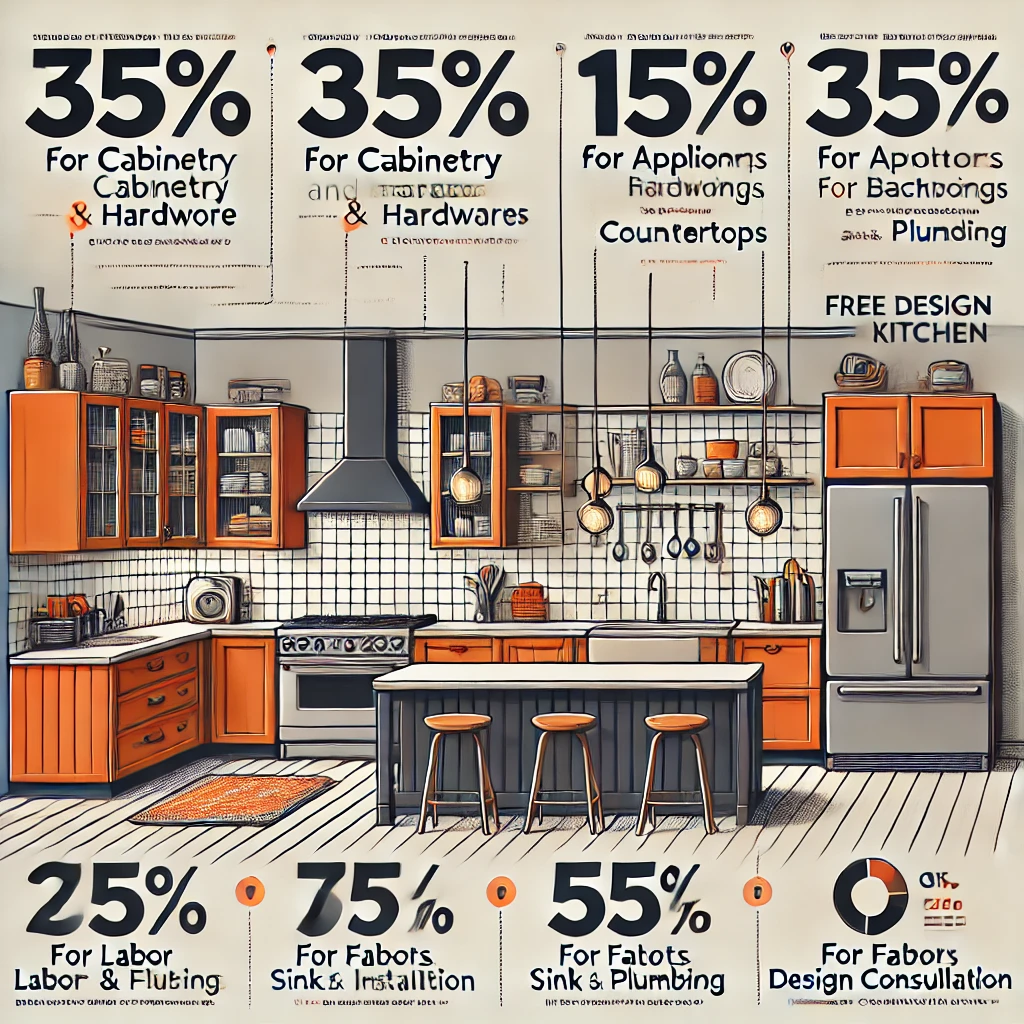
Introduction
A kitchen remodel is one of the most exciting home improvement projects you can undertake. Whether you’re looking to increase the value of your home, create a more functional cooking space, or simply refresh the look of your kitchen, a remodel can make a world of difference. However, before you dive in, it’s crucial to understand the costs involved. Remodeling a kitchen can be a significant investment, and having a clear budget in place is essential to ensure that your vision becomes a reality without breaking the bank.
In this guide, we’ll break down the costs associated with remodeling kitchens of various sizes and provide helpful tips to help you make informed decisions. From the most common remodeling mistakes to expert advice on how to stay within budget, we’ve got you covered. Let’s explore what goes into the cost of a kitchen remodel, so you can plan your dream kitchen without the stress!
Overview of Kitchen Remodels
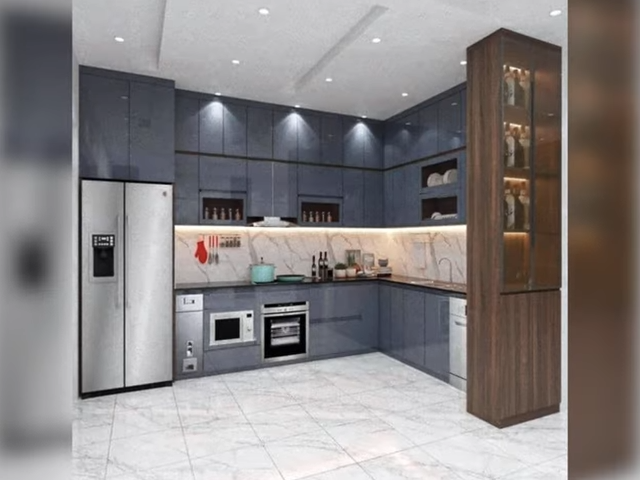
A kitchen remodel involves updating or upgrading several aspects of your cooking space to make it more functional, aesthetically pleasing, or efficient. It typically includes changes to cabinets, countertops, flooring, lighting, appliances, and layout. In some cases, homeowners may even opt for structural changes, such as removing walls to create an open-concept design.
Kitchen remodels can vary in complexity and cost, depending on the scope of the project. A minor remodel might focus on cosmetic upgrades like new paint, fixtures, or flooring, while a major remodel could involve a complete overhaul, including plumbing and electrical work. No matter the scale of your remodel, it’s important to have a clear plan and set realistic expectations.
The kitchen is often considered the heart of the home, where family members gather to cook, eat, and socialize. As such, it’s one of the most valuable rooms to remodel. Whether you’re creating a modern space or aiming for a more traditional style, a kitchen remodel can significantly improve your home’s overall value and functionality.
Importance of Budgeting for Your Kitchen Remodel
Budgeting is the cornerstone of any successful kitchen remodel. Without a clear budget, it’s easy to get carried away with upgrades that are outside your price range, leading to costly surprises down the road. A well-planned budget helps you make informed decisions, avoid unnecessary expenses, and ensures that your project stays on track financially.
When setting a budget, it’s important to consider both the cost of materials and the labor involved. High-quality materials such as granite countertops or custom cabinetry may come at a premium, but they can add significant value to your home. On the other hand, opting for budget-friendly materials like laminate or stock cabinets can help keep your remodel within reach.
Additionally, consider factors like the cost of permits, potential structural changes, and any unforeseen expenses that may arise during the renovation. It’s always a good idea to set aside a contingency fund—typically 10-20% of your total budget—in case unexpected issues come up during the project.
Proper budgeting also ensures that you don’t have to cut corners on important elements. By carefully considering what’s most important to you, you can prioritize your spending and allocate resources to the areas that will have the greatest impact on your kitchen’s overall functionality and aesthetic.
Understanding the Factors that Impact Remodel Costs
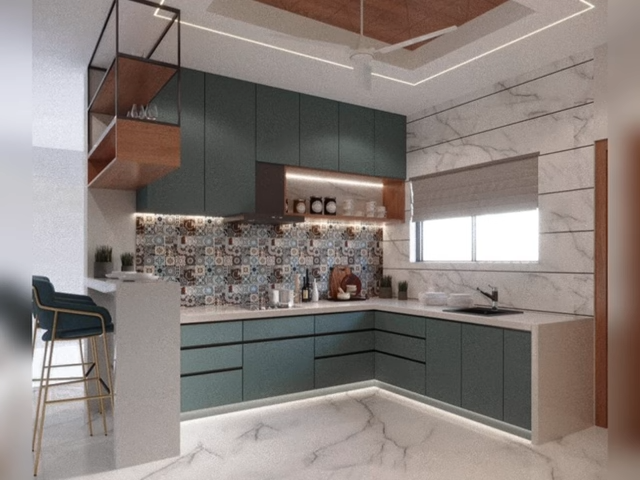
Several factors influence the overall cost of your kitchen remodel. Understanding these factors can help you plan more effectively and avoid going over budget. Here’s a breakdown of what affects kitchen remodel costs:
- Kitchen Size and Layout: The larger the kitchen, the higher the cost, as more materials and labor are required. Similarly, if you’re planning to change the layout of your kitchen—such as knocking down walls or adding an island—this will increase the cost due to the need for more extensive work.
- Materials: The type of materials you choose will have a significant impact on the overall cost. High-end materials like marble countertops, solid wood cabinets, or custom flooring are more expensive than standard options. However, opting for mid-range materials can give you the look and feel of luxury without the hefty price tag.
- Labor Costs: Hiring skilled professionals for tasks like electrical work, plumbing, and cabinetry installation can be a major portion of your remodel budget. Labor costs can vary depending on the complexity of the job, the region, and the expertise of the contractors.
- Appliances: The appliances you choose will also affect the price of your remodel. Top-of-the-line appliances, such as high-end refrigerators, ovens, and dishwashers, will add to your costs. However, they can also increase the value of your home and provide long-term savings on energy bills.
- Permits and Licenses: Depending on the scope of your remodel, you may need to obtain permits for structural changes, plumbing, or electrical work. These permits can add to your costs, but they are necessary to ensure the work complies with local building codes and regulations.
- Unexpected Costs: Even with the best planning, unexpected issues can arise during the remodel process. Whether it’s outdated plumbing, electrical issues, or structural problems, it’s essential to have a contingency fund to cover these unexpected costs.
By understanding these key factors, you can make better decisions when it comes to your kitchen remodel and avoid financial surprises along the way. Planning ahead will ensure that you get the kitchen you’ve always wanted without overspending.
10×10 Kitchen Remodel Cost: What You Need to Know
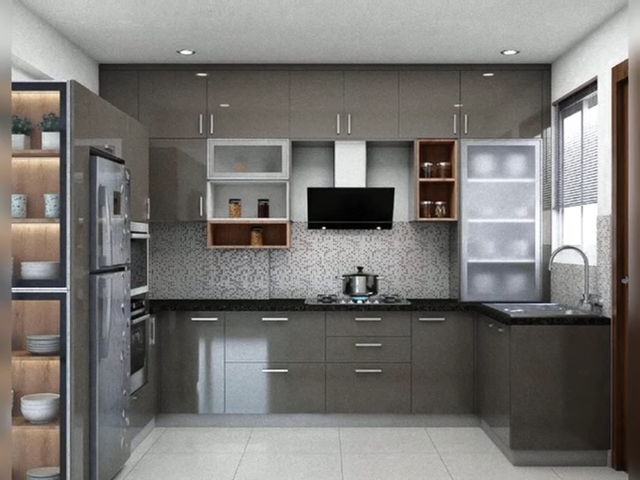
Remodeling a 10×10 kitchen is a popular choice for many homeowners looking to refresh their space. With its compact size, this kitchen layout offers enough room to make significant improvements without the overwhelming cost that comes with larger spaces. Whether you’re aiming for a modern upgrade or simply want to improve functionality, understanding the cost of a 10×10 kitchen remodel is essential to staying on track financially.
Overview of the 10×10 Kitchen Size
A 10×10 kitchen is typically a square layout, offering 100 square feet of space. It’s a common size for mid-sized kitchens and often includes essential kitchen features like a stove, refrigerator, sink, and cabinets. While this size is perfect for smaller to medium-sized families, it still provides plenty of room for layout changes, new appliances, and other upgrades.
In a 10×10 kitchen, you can expect a balanced use of space for prepping, cooking, and storage. Though it’s not the largest, it’s certainly large enough to add a modern touch or even a bit of luxury with the right upgrades.
Average Remodel Cost
The average cost to remodel a 10×10 kitchen falls between $12,000 and $30,000, depending on the level of renovation. If you’re making minor updates, such as replacing countertops, installing new cabinets, and adding fresh flooring, you can expect the costs to be on the lower end of this range. However, a more extensive remodel with custom features, high-end materials, and professional contractors can push the cost toward the higher end.
Factors like your location, the quality of materials you choose, and whether you’re making structural changes can also influence the final price.
Cost Breakdown
Cabinets
Cabinets are often the most significant expense in a kitchen remodel. For a 10×10 kitchen, you can expect to spend anywhere from $4,000 to $12,000 on cabinetry alone. The cost will depend on whether you opt for custom cabinets or stock options.
- Stock cabinets are pre-made and come in standard sizes, typically costing between $2,000 and $6,000 for a 10×10 kitchen.
- Custom cabinets, on the other hand, are built to your exact specifications and can cost anywhere from $6,000 to $12,000 or more, depending on the material, design, and craftsmanship.
Countertops
The type of countertop you choose plays a large role in your kitchen’s look and durability. Here’s a breakdown of common materials and their costs:
- Laminate: The most budget-friendly option, typically costing $1,000 to $2,500 for a 10×10 kitchen.
- Granite: A popular, mid-range option, usually costing between $2,000 and $4,000.
- Quartz: A durable and stylish choice that can range from $2,500 to $5,000, depending on the brand and quality.
The material you choose will impact not only the aesthetic but also the maintenance and longevity of your countertops.
Flooring
There’s a wide range of flooring options for a 10×10 kitchen, from budget-friendly to high-end selections. Here are some common choices:
- Vinyl: One of the most affordable choices, with costs ranging from $800 to $2,000 for a 10×10 kitchen.
- Tile: A versatile and durable option, costing between $1,500 and $3,000.
- Hardwood: A popular and elegant option, which can cost anywhere from $2,500 to $5,000.
Your flooring choice can greatly impact the kitchen’s style, ease of maintenance, and comfort underfoot.
Appliances
Upgrading appliances can be a major factor in your kitchen remodel budget. For a 10×10 kitchen, here’s an idea of what you might spend:
- Basic appliances: A standard refrigerator, stove, and dishwasher could cost anywhere from $2,500 to $6,000 for the entire set.
- High-end appliances: For top-of-the-line models, including smart refrigerators, ranges, and ovens, expect to spend $6,000 to $12,000 or more.
Upgrading your appliances not only enhances the functionality of your kitchen but also adds value to your home.
DIY vs Professional Remodel: Cost Comparison and Potential Savings
If you’re handy with tools, doing some of the work yourself can save you money on labor costs. For instance, installing new cabinet hardware, painting, or even laying down flooring can be a good DIY option. However, certain tasks, such as electrical work, plumbing, or cabinet installation, are best left to professionals to ensure safety and quality.
While DIY can help reduce costs, it can also lead to mistakes that may cost more to fix later. Professional remodelers can ensure that your kitchen is not only aesthetically pleasing but also functional and up to code. Hiring professionals could cost anywhere from $4,000 to $8,000 for labor, but their expertise can prevent costly errors.
Additional Costs: Plumbing, Electrical, and Structural Changes
Sometimes, a kitchen remodel involves more than just cosmetic upgrades. Structural changes, such as knocking down walls, relocating plumbing, or updating electrical wiring, can add significant costs.
- Plumbing: Moving or upgrading plumbing, such as installing a new sink or relocating the dishwasher, can add $1,000 to $5,000 to your total remodel cost.
- Electrical: Upgrading electrical wiring or adding new outlets can cost between $1,000 and $2,500, especially if you need to meet new safety standards.
- Structural changes: If you’re planning on changing the layout of your kitchen, such as removing a wall or adding an island, you could see an additional $2,000 to $10,000 in costs.
These hidden expenses are important to consider when budgeting for your kitchen remodel, as they can quickly add up.
Remodeling a 10×10 kitchen can be an exciting and rewarding project. By understanding the costs and making informed decisions, you can create the kitchen of your dreams without blowing your budget. Whether you choose to go with stock options or splurge on custom features, your remodel can add both beauty and functionality to the heart of your home.
12×12 Kitchen Remodel Cost: Breakdown of Expenses
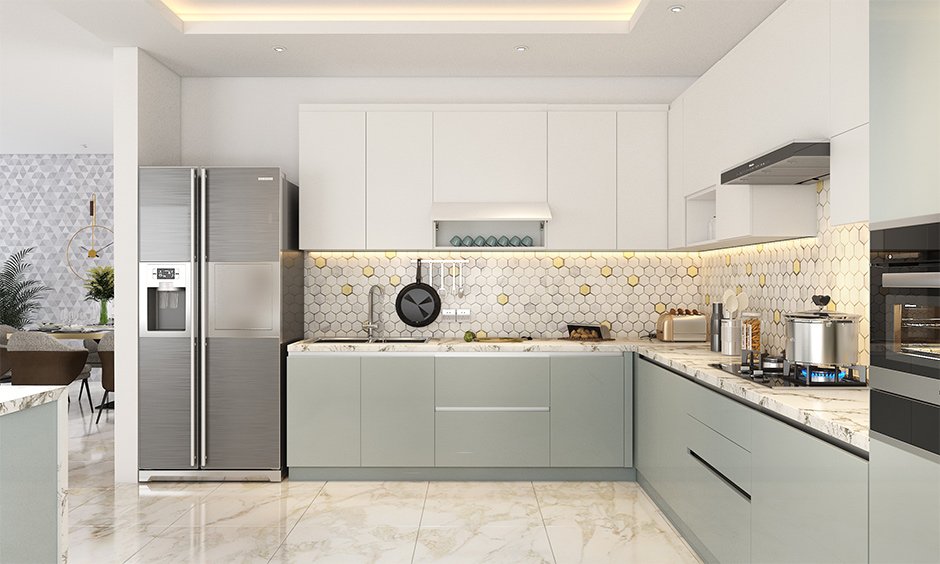
Remodeling a 12×12 kitchen is a step up from a smaller kitchen remodel, offering more space for creativity and luxury. Whether you are looking to enhance functionality or achieve a high-end design, understanding the cost breakdown for this kitchen size is crucial. Let’s explore the various factors involved in remodeling a 12×12 kitchen, from cabinets to luxury features.
Overview of the 12×12 Kitchen Size
A 12×12 kitchen layout offers 144 square feet of space, making it larger than a 10×10 kitchen and ideal for families who want a spacious, functional cooking area. With this additional space, you can include more storage, potentially an island, and have room for a more open layout. This kitchen size allows you to get creative with design, upgrade appliances, and add extra amenities, all while keeping the space highly functional.
The 12×12 layout is versatile, allowing for a variety of design styles, from classic to modern, and providing flexibility in how the kitchen is organized.
Average Remodel Cost
The average cost to remodel a 12×12 kitchen typically ranges from $15,000 to $40,000. The wide range is due to varying factors such as location, materials, and the complexity of the remodel. For example, opting for luxury features, custom designs, and high-end finishes can push the costs to the upper end of the range, while a more basic remodel with standard materials and finishes will keep the costs lower.
Your kitchen remodel can cost more if you’re upgrading to smart appliances, adding high-end cabinetry, or integrating custom lighting and fixtures.
Cost Breakdown
Cabinets
Cabinets are often one of the largest expenses when remodeling any kitchen. For a 12×12 kitchen, here’s a breakdown of cabinet costs:
- Stock Cabinets: Ranging from $4,000 to $8,000 for a 12×12 kitchen, stock cabinets are pre-made and come in standard sizes, offering a budget-friendly option.
- Semi-Custom Cabinets: These can cost between $6,000 and $15,000, as they offer more flexibility in terms of size and design but still come from a standard range of options.
- Custom Cabinets: If you choose custom cabinetry tailored to your specific needs, expect to pay anywhere from $10,000 to $20,000 or more. Custom cabinets offer the highest level of personalization and can make a big impact on the kitchen’s look.
Countertops
The material you select for your countertops can significantly impact the overall cost of your remodel. Common choices include:
- Laminate: $2,000 to $3,500 – The most affordable option, offering many colors and styles.
- Granite: $4,000 to $7,000 – A popular option for a timeless look and durability.
- Quartz: $5,000 to $8,000 – Another high-quality option with low maintenance needs.
- Marble: $7,000 to $10,000 – A luxury option that offers stunning aesthetic value but requires more maintenance.
Each material varies in price depending on the brand, quality, and where you purchase it, so it’s important to do your research.
Lighting & Fixtures
Upgrading your kitchen’s lighting and fixtures can add a significant amount of style and functionality.
- Lighting Fixtures: Expect to pay between $1,000 to $3,000 for a full lighting upgrade, including under-cabinet lighting, pendant lights, and ceiling lights.
- Plumbing Fixtures: Upgrading your sink, faucet, and adding a high-end dishwasher can cost between $1,500 to $4,000.
New, modern lighting and fixtures not only elevate the look of your kitchen but also improve its overall function.
Flooring
Flooring choices for a 12×12 kitchen can vary greatly depending on material and quality. Popular options include:
- Vinyl: $1,500 to $3,000 – Vinyl is a cost-effective, durable, and easy-to-maintain flooring option.
- Tile: $3,000 to $6,000 – Ceramic or porcelain tile is a popular option known for its durability and variety of styles.
- Hardwood: $4,000 to $8,000 – Hardwood floors bring warmth and elegance, although they come at a higher price point.
Each option offers different aesthetic and durability qualities, so consider your needs before deciding.
Labor Costs
Labor plays a significant role in the cost of any kitchen remodel. Professional contractors, electricians, and plumbers are required to ensure everything is installed correctly and up to code. Labor costs for a 12×12 kitchen remodel can range from $6,000 to $12,000, depending on the complexity of the work and the quality of the professionals you hire.
Labor costs are often higher in urban areas and regions with a higher cost of living, so be sure to factor this into your budget.
Customization and Luxury Features
Customization and luxury features can significantly increase the cost of your remodel. These include:
- Custom islands, which can range from $3,000 to $10,000.
- High-end appliances, such as smart refrigerators or professional-grade ranges, which can cost between $4,000 to $12,000.
- Backsplash options like mosaic tile or natural stone, which can cost anywhere from $1,000 to $3,000.
These luxurious features elevate the kitchen’s design and functionality but come with a higher price tag.
Budgeting Tips: Ways to Save While Upgrading
- Opt for Stock Cabinets: Instead of custom or semi-custom cabinetry, stock cabinets are much more affordable while still offering a variety of styles.
- Choose Affordable Countertops: Laminate or granite options are both durable and stylish without breaking the bank.
- DIY Small Tasks: Tasks like painting or installing new hardware on cabinets can be easily handled yourself, saving on labor costs.
- Shop Sales and Discounts: Keep an eye out for sales, and consider buying appliances and materials during off-seasons to save money.
Remodeling a 12×12 kitchen doesn’t have to be overly expensive. By carefully planning and prioritizing, you can create the kitchen you’ve always wanted while staying within your budget.
10×20 Kitchen Remodel Cost: Average Pricing and Factors to Consider
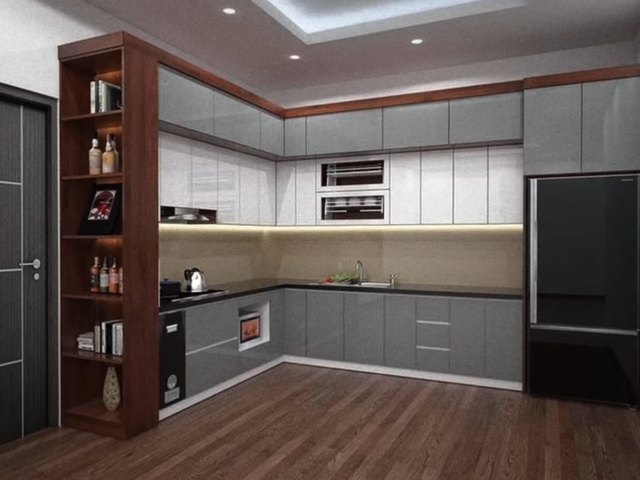
A 10×20 kitchen remodel is a significant undertaking that involves substantial planning, budgeting, and decision-making. With 200 square feet of space, a 10×20 kitchen offers ample room for a variety of design elements, storage solutions, and top-tier appliances. Here’s what you need to know about the costs and considerations for remodeling this larger kitchen space.
Overview of the 10×20 Kitchen Size
The 10×20 kitchen layout spans 200 square feet, providing ample space for kitchen islands, multiple countertops, a variety of cabinetry styles, and possibly even an eating area. This kitchen size is ideal for larger families or those who love to entertain, as it allows for an open and functional design. The expansive layout also enables the integration of modern design features and high-end appliances, offering both form and function.
With this extra space, the kitchen can accommodate all the latest trends like open shelving, a double oven, or a large island that doubles as a dining space, making it a versatile area that can be customized to suit different lifestyles.
Average Remodel Cost
The average cost to remodel a 10×20 kitchen typically ranges between $25,000 and $60,000. The price range varies widely based on the choice of materials, labor costs, and the level of customization desired. For instance, opting for high-end materials and luxury appliances will elevate the price, while a more budget-conscious remodel with basic finishes will keep costs on the lower end of the spectrum.
This range reflects the size of the space and the potential complexity of the remodel, as larger kitchens may require additional plumbing, electrical work, or structural changes.
Cost Breakdown
Cabinets
When remodeling a 10×20 kitchen, cabinets represent a significant portion of the overall cost. The type of cabinets you choose can drastically impact your budget:
- Stock Cabinets: $6,000 to $12,000. These are pre-manufactured cabinets that come in standard sizes. They offer a lower price point but still provide various finishes and styles.
- Semi-Custom Cabinets: $12,000 to $20,000. Semi-custom cabinets allow for some flexibility in design, and they are a popular choice for many homeowners.
- Custom Cabinets: $20,000 to $40,000. Custom cabinets are designed specifically for your kitchen, offering a tailored fit, style, and finish. While they come with a higher price tag, they can elevate the overall design of the kitchen.
For a 10×20 kitchen, choosing semi-custom or custom cabinetry might be a popular choice due to the larger space and greater flexibility in design.
Countertops
Countertops are another essential feature that will impact your overall remodel cost. Materials vary greatly in price:
- Granite: $4,000 to $8,000 for high-quality granite countertops. This material is known for its durability and timeless aesthetic.
- Quartz: $4,500 to $9,000. Quartz is another durable, low-maintenance option, and it often comes in a wider range of colors and designs than granite.
- Marble: $6,000 to $12,000. Marble is a luxurious material that adds elegance to the kitchen but requires regular maintenance.
- Concrete or Butcher Block: $3,000 to $6,000. For a more industrial or rustic look, concrete or butcher block options are available at a lower cost than stone countertops.
Selecting the right material for your countertops is essential for both functionality and aesthetics, and larger kitchens like a 10×20 space typically warrant durable, high-quality materials.
Flooring
The flooring in a 10×20 kitchen can be a mix of high-end, durable options. Popular choices include:
- Tile: $3,000 to $7,000. Ceramic or porcelain tiles are highly versatile and come in various colors and styles. They are easy to clean and durable.
- Hardwood: $4,000 to $10,000. Hardwood floors add warmth and elegance to the space but may require more maintenance than tile.
- Luxury Vinyl Plank (LVP): $3,000 to $6,000. LVP has grown in popularity for its durability, ease of installation, and attractive price point.
- Stone (e.g., Slate, Travertine): $5,000 to $8,000. Stone flooring gives the kitchen a luxurious look, although it can be expensive.
With the extra space available in a 10×20 kitchen, high-end flooring options can really make a statement, particularly if you want to add texture and design features to the space.
Appliances
Upgrading to professional-grade kitchen appliances is often a priority in larger kitchens like a 10×20 remodel. Here’s what to expect:
- Basic Appliances: $5,000 to $10,000. Standard appliances, such as a refrigerator, stove, and dishwasher, can come in various price ranges depending on their brand and features.
- Professional Appliances: $12,000 to $20,000. These include high-end brands such as Viking or Sub-Zero, known for their durability and performance.
- Smart Appliances: $15,000 to $25,000. If you want smart kitchen technology (e.g., refrigerators that can track inventory, ovens you can control remotely), the price will increase significantly.
Professional-grade appliances are a great investment for a 10×20 kitchen, enhancing both the cooking experience and the overall value of the home.
Lighting & Design Features
Good lighting is crucial in a large kitchen, and design features like lighting can elevate the space. Expect costs for lighting upgrades to range between $2,000 and $5,000 depending on the style and complexity of installation.
- Under-cabinet lighting: Adds ambiance and increases the functionality of the kitchen.
- Pendant lights: Ideal for over-island lighting or adding decorative flair.
- Recessed Lighting: Great for general illumination, especially in larger spaces.
Adding design features such as modern backsplashes, open shelving, or unique lighting fixtures can also add to the overall look and feel of the kitchen.
Additional Factors
- Structural Changes: If you need to remove walls or make adjustments to the kitchen’s layout, structural changes can cost anywhere from $2,000 to $10,000, depending on the complexity of the work.
- Plumbing and Electrical: Plumbing or electrical updates might range from $1,500 to $5,000 or more, depending on the extent of the work.
- Rewiring: If the kitchen needs new wiring to support appliances or lighting, costs could be anywhere from $2,000 to $6,000.
Luxury Features
For homeowners seeking luxury additions, a 10×20 kitchen offers plenty of room to indulge in smart technology and upscale features:
- Smart Technology: High-tech appliances, integrated sound systems, and touchscreen-controlled faucets can add $10,000 or more to your remodel.
- Built-in Seating or Custom Islands: Custom seating or a large, built-in island can range from $3,000 to $10,000, making the space more functional and inviting.
Luxury features can transform the kitchen into the ultimate entertaining space, but they come at a premium price.
Cost-Saving Suggestions
While a 10×20 kitchen remodel can become quite costly, here are some ways to maximize value without sacrificing quality:
- Opt for Semi-Custom Cabinets: These cabinets offer a blend of affordability and flexibility in design.
- Consider Laminate Countertops: While high-end materials are tempting, laminate options have improved dramatically and can look stylish without the hefty price tag.
- DIY Tasks: Painting the kitchen or installing a backsplash can save on labor costs.
- Shop Sales: Take advantage of seasonal sales for appliances and materials, or explore discounts from local suppliers.
By prioritizing key upgrades and being strategic with your spending, you can achieve your dream kitchen within your budget.
Factors that Affect Kitchen Remodel Costs for Any Size
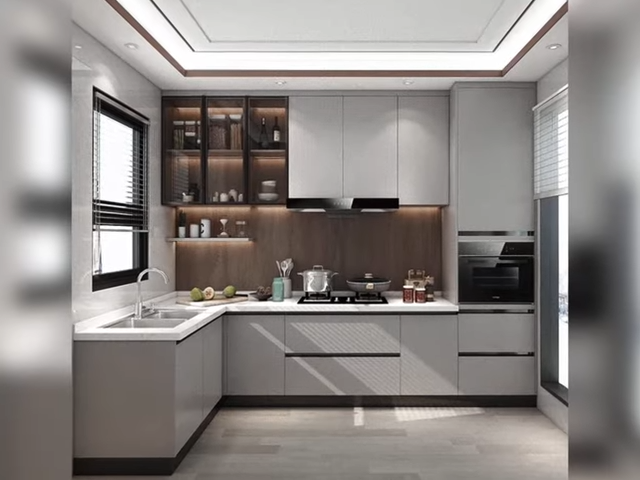
When planning a kitchen remodel, it’s crucial to understand the various factors that can influence the total cost, regardless of the kitchen’s size. Whether you’re updating a small kitchen or undertaking a larger renovation, these elements play a significant role in shaping the final price tag.
1. Kitchen Layout: Impact of Layout Changes and Open-Concept Designs
The layout of your kitchen has one of the most significant impacts on remodeling costs. Altering the kitchen’s layout — for example, removing walls or shifting the placement of key elements like sinks and stoves — can be a costly endeavor. Here’s why:
- Open-Concept Designs: Opening up your kitchen to the dining or living area typically requires structural changes, such as removing load-bearing walls or reinforcing the structure. These alterations can significantly raise labor costs, often by thousands of dollars.
- Wall Removals: Removing walls, especially load-bearing ones, requires additional labor for demolition and reinforcement. This can increase costs for both the materials needed and the labor involved, sometimes adding $2,000 to $10,000, depending on the complexity of the work.
Overall, more extensive layout changes lead to higher labor costs and may necessitate more structural work.
2. Material Choices: How Your Choice of Materials Influences Costs
The materials you select for your kitchen remodel will directly affect your budget. Kitchen materials range in price, and the choice between high-end versus budget-friendly options can make a substantial difference.
- Premium Materials: High-end materials like marble countertops or hardwood flooring are beautiful and durable but come with a hefty price tag. Marble countertops, for example, can cost $50 to $150 per square foot, compared to laminate options that might only cost $20 to $40 per square foot.
- Standard Options: Materials such as granite or quartz countertops, or laminate flooring, offer a balance between price and quality. These options are often chosen for their durability and mid-range cost.
Choosing premium finishes and custom materials can push the cost of a remodel up, while more affordable alternatives help keep the project within budget.
3. Labor Costs: Hiring Professionals vs DIY Work
Labor costs are often the largest portion of your kitchen remodel budget. The decision between hiring professionals and doing some of the work yourself (DIY) can significantly affect the overall cost.
- Hiring Professionals: Professional contractors, electricians, plumbers, and designers can provide expert craftsmanship and ensure that the work meets safety standards. While professional labor adds to the cost (often accounting for 30-40% of your total remodel), their expertise ensures a higher-quality result.
- DIY Work: Doing some tasks yourself, such as painting, demolition, or even installing simple cabinetry, can save you money. However, DIY work can be time-consuming and may result in higher costs if mistakes are made. More complex tasks, such as electrical or plumbing work, should always be left to professionals due to safety concerns and local regulations.
Balancing professional help with DIY tasks is a good way to save money without compromising quality, especially for tasks that require technical expertise.
4. Design and Custom Features: How Custom Designs Affect Remodel Price
Custom features can give your kitchen a unique, personalized look but come at a premium price. Features like custom cabinetry, intricate backsplashes, or high-end fixtures can add considerable costs to your remodel.
- Custom Cabinets: Custom cabinetry is built to fit your kitchen’s specific dimensions and design preferences. Prices for custom cabinets can range from $15,000 to $30,000 for a larger kitchen, depending on the materials and complexity.
- Custom Islands and Layouts: Custom-built islands, personalized storage solutions, and specialized design elements like open shelving or built-in appliances also increase the price.
- Luxury Features: Adding luxury items, such as smart appliances, designer faucets, or professional-grade cooktops, can further increase the remodel cost by several thousand dollars.
While custom designs elevate the look and functionality of your kitchen, it’s essential to carefully weigh the cost of these luxury features against your budget.
5. Region and Location: How Regional Labor Costs and Material Prices Affect Your Budget
The location of your home plays a significant role in determining both labor and material costs. Labor rates vary by region, with larger cities or areas with a high cost of living typically having higher prices.
- Labor Costs: In metropolitan areas like New York or San Francisco, labor costs can be significantly higher than in smaller towns. Contractors in high-demand areas often charge more due to the cost of living and demand for skilled workers.
- Material Prices: Regional factors can also influence the price of materials. For instance, certain materials might be more affordable in some regions due to local availability. Importing specialty materials or custom pieces can also drive up the cost in some areas.
Being aware of the regional cost differences and planning accordingly can help you better understand and manage your budget.
Understanding these factors and how they influence your kitchen remodel costs will allow you to make informed decisions and help you stay within your desired budget. By carefully selecting materials, planning the layout, and balancing professional help with DIY efforts, you can create a beautiful, functional kitchen without breaking the bank.
How to Save Money on Your Kitchen Remodel
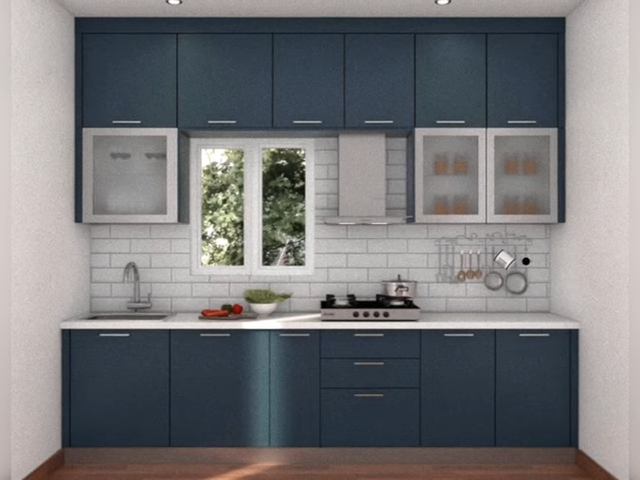
Remodeling your kitchen can be a costly project, but there are several strategies to keep costs down without sacrificing quality. By being resourceful and strategic, you can save money while achieving the kitchen of your dreams. Here are some practical tips:
1. DIY Ideas: Tasks You Can Tackle Yourself to Reduce Costs
One of the most effective ways to save on your kitchen remodel is by taking on some of the work yourself. There are various tasks you can handle without professional help, depending on your skills and experience. Here are a few DIY tasks to consider:
- Demolition: If you’re updating your kitchen, you can save a lot by doing the demolition yourself. This includes removing old cabinets, countertops, and flooring.
- Painting: Fresh paint can completely transform a kitchen. Doing it yourself saves on labor costs.
- Installing Backsplashes: Many homeowners can successfully install peel-and-stick backsplashes or tile backsplashes with basic tools, saving a significant amount on labor.
- Cabinet Refacing: Instead of replacing cabinets, consider refinishing or refacing them, which is a more affordable alternative.
Remember that for more complex tasks like electrical, plumbing, or gas work, it’s best to hire a professional to avoid potential safety issues.
2. Material Substitutes: Affordable Alternatives to High-End Materials
High-end materials like marble countertops or custom cabinetry can quickly drive up your costs. However, there are plenty of affordable substitutes that offer a similar look and feel:
- Countertops: Instead of pricey granite or marble, consider laminate or engineered quartz, which are more budget-friendly options that still provide durability and style.
- Cabinets: Stock cabinets or semi-custom options are far less expensive than fully custom cabinets. You can also consider refacing or painting existing cabinets to give them a fresh look without the high price tag.
- Flooring: Instead of hardwood or high-end tile, you could opt for vinyl plank flooring or laminate, which look great and are much cheaper to install.
By choosing more affordable materials, you can still achieve a stylish, modern kitchen without breaking the bank.
3. Scheduling and Timing: How Remodeling During the Off-Season Can Lower Costs
Timing your kitchen remodel can have a significant impact on the cost. Remodeling during peak seasons, typically spring and summer, means higher demand for contractors and materials, which can increase prices. By scheduling your remodel during the off-season, typically fall or winter, you can take advantage of lower rates and discounts:
- Contractor Availability: Contractors may offer lower prices during their off-peak seasons because they have more availability.
- Material Discounts: Home improvement stores often run sales or offer discounts during the off-season, making it a great time to purchase materials at a lower price.
In addition to saving on contractor fees and materials, working in the off-season might also result in quicker project completion since contractors have fewer jobs lined up.
4. Comparing Quotes: Why Getting Multiple Contractor Quotes Can Save Money
One of the easiest ways to save money on your kitchen remodel is by shopping around for contractors. Getting multiple quotes helps you find the best deal for your project. Here’s how you can use this strategy effectively:
- Get at Least Three Quotes: Aim to get quotes from three or more contractors. This will give you a good sense of the going rate for your specific remodel and help you avoid overpaying.
- Negotiate: Use the quotes to negotiate with your preferred contractor. If you like one contractor but another is offering a lower price, ask if they can match or beat it.
- Evaluate the Total Cost: When comparing quotes, look beyond the initial price and evaluate the entire cost, including materials, labor, and any extra charges.
By implementing these cost-saving strategies, you can achieve your dream kitchen without overspending. Whether it’s through DIY work, choosing affordable materials, scheduling during the off-season, or shopping around for the best contractor quotes, these steps will help you save money while still creating a functional and stylish space.
Conclusion: A Final Word on Kitchen Remodel Costs
Remodeling your kitchen can seem like a daunting task, especially when considering the various sizes and factors that influence costs. However, with a little planning and understanding of your options, you can navigate through it more easily.
Summary of Kitchen Remodel Costs for 10×10, 12×12, and 10×20 Kitchens
Kitchen remodel costs vary significantly depending on the size of the space you’re working with. Here’s a quick summary:
- 10×10 Kitchen: A smaller kitchen can cost between $5,000 and $15,000 for a basic remodel. Opting for high-end materials or custom cabinetry can raise this price.
- 12×12 Kitchen: The cost for remodeling a 12×12 kitchen typically falls between $12,000 and $25,000. Custom features and upscale materials will push the price toward the higher end of the range.
- 10×20 Kitchen: Larger kitchens, such as a 10×20 layout, usually cost $15,000 to $40,000, depending on how luxurious the finishes and appliances are.
Each kitchen remodel is unique, and costs will depend on your specific design choices, materials, and labor requirements.
How to Create a Realistic Budget
Creating a realistic budget for your kitchen remodel is essential to avoid surprises along the way. Here’s how you can ensure your budget stays on track:
- Start with a Basic Estimate: Begin by calculating the average costs for the remodel size and type (10×10, 12×12, or 10×20) as we discussed earlier. Factor in the costs for cabinets, countertops, appliances, flooring, and labor.
- Consider Upgrades: If you plan to include custom features or luxury materials, account for them in your budget. It’s always best to overestimate slightly, so you have room for unexpected costs.
- Get Multiple Quotes: Comparing quotes from contractors will help ensure you’re getting the best deal and prevent overspending.
- Account for Contingencies: It’s always a good idea to set aside about 10-20% of your budget for unforeseen issues that might arise during the remodel.
Final Tips for Maximizing Value in Your Remodel
To ensure you’re getting the most value from your remodel, consider the following:
- Prioritize Key Updates: Focus on updating features that will make the biggest impact, such as upgrading appliances, improving lighting, and choosing durable materials that add long-term value.
- Balance Quality and Budget: You don’t have to opt for the most expensive options, but make sure the materials and finishes you choose are durable and functional for daily use.
- Incorporate Energy-Efficient Upgrades: Consider adding energy-efficient appliances, lighting, and insulation. These upgrades may have a higher initial cost but will save you money in the long run through reduced utility bills.
- Work with a Designer: A professional designer can help you make smart design choices that maximize space and value without overspending.
By understanding the costs associated with remodeling kitchens of various sizes, setting a clear budget, and following these tips, you’ll be better prepared to create a kitchen that blends style, functionality, and value.

